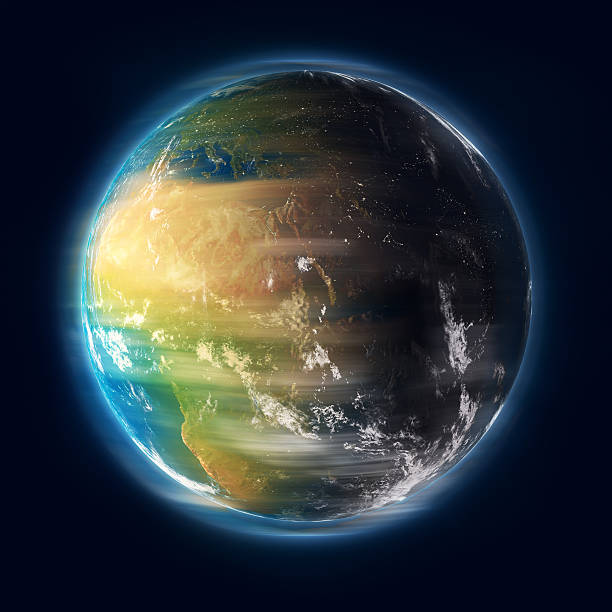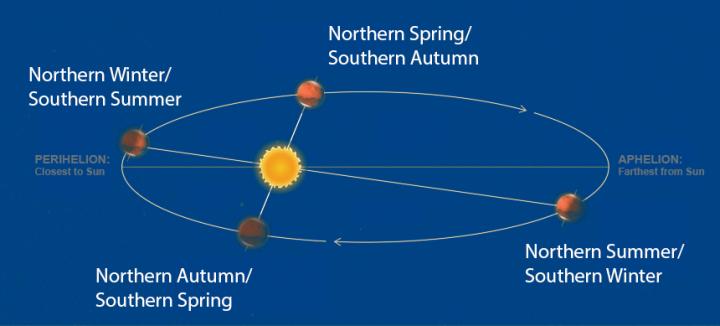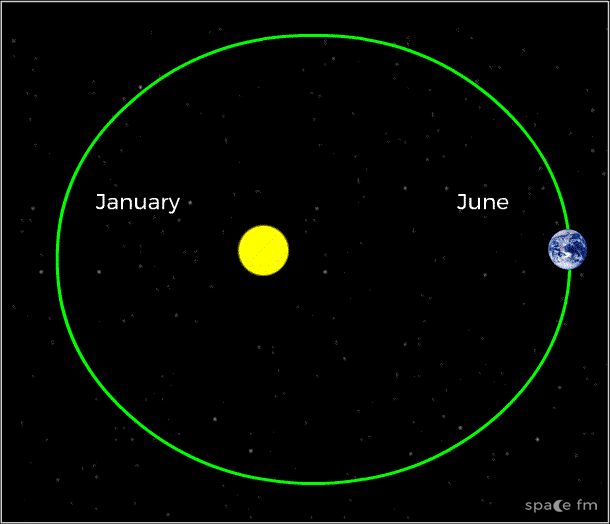
Earth Reached Maximum Speed on January 4th.
Share
Why Did Earth Reach Its Maximum Speed on 4th January 2023?
On 4th January, our planet reached perihelion, marking its closest point to the Sun in its annual orbit. But there's more to it than just proximity. This significant event brought about the highest orbital speed, propelling Earth 3,420 kilometres per hour faster than its average speed.
As we know, the Earth revolves around the Sun in an elliptical orbit spanning 930 million kilometres, with an average speed of 107,280 kilometres per hour. It takes the planet approximately 365 days and nearly 6 hours to complete one full revolution, resulting in a leap year occurring every 4 years.
However, this translation speed is not constant, as revealed by the findings of the German astronomer Johannes Kepler (1571-1630) during his study of the laws of planetary motion.
Kepler's second law, commonly referred to as the "law of areas," states that the radius vector sweeps out equivalent areas in equal time intervals. The radius vector represents an imaginary line connecting a planet to the Sun, and its length varies based on the distance between them.

When Earth is closer to the Sun during perihelion, the radius vector is shorter, causing it to sweep through a smaller area in a given time. Consequently, in order to maintain the law of areas, the planet must accelerate, resulting in a higher orbital speed than its average. This accounts for the notable increase of 3,420 kilometres per hour above the typical speed.
The phenomenon of reaching maximum speed during perihelion is a fascinating aspect of Earth's orbital dynamics. It showcases the intricacies of planetary motion and reminds us of the precise balance that governs celestial bodies in our solar system.
So, on 4th January 2023, as Earth reaches its closest point to the Sun, let us marvel at the astronomical wonders unfolding in our skies and appreciate the remarkable laws that shape the cosmic dance of our planet and its celestial companion.
ARSE Jnr

Did you know that Earth, the planet we live on, travels around the Sun in a big circle? This journey is called an orbit, and it takes one whole year for Earth to complete it. But here's something interesting: on 4th January 2023, Earth will be at its closest point to the Sun during its orbit. We call this special moment "perihelion."
When Earth gets really close to the Sun during perihelion, something cool happens. Earth starts moving faster than usual! Imagine you're riding a bicycle, and you pedal faster when you're going downhill. That's kind of what happens to Earth during perihelion. It speeds up and goes zooming through space!
This speedy motion happens because of something called the "law of areas," discovered by a clever scientist named Johannes Kepler. Kepler noticed that when Earth is closer to the Sun, it has to move faster to make sure everything is just right in space. It's like when you're playing catch with a friend. If your friend is far away, you can throw the ball slowly. But if your friend is very close, you have to throw the ball faster so they can catch it.
During perihelion, Earth's path around the Sun is like a big oval shape, and one side of the oval is much closer to the Sun than the other side. The line connecting Earth and the Sun, called the radius vector, is shorter when Earth is close to the Sun. This means that Earth has to go really fast to make sure it covers the same amount of space in the same amount of time.
So, on 4th January 2023, Earth will be at its closest to the Sun, and it will be racing through space faster than usual. It's like Earth is having an exciting adventure, zooming around the Sun! It's a fascinating part of how our planet moves in space, and it's a reminder of how amazing our universe is.
Next time you look up at the sky and see the Sun, remember that Earth is on a big journey, and sometimes it gets to go extra fast during perihelion. It's like a little race in space, and it's really special.
You’ve come this far…
Why not venture a little further into A.S.S. - our exclusive Australian Space Society.
And keep thrusting Australia into the deep unknown…
#Space_Aus




